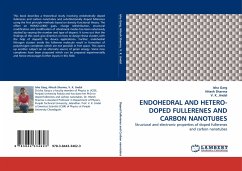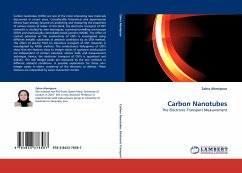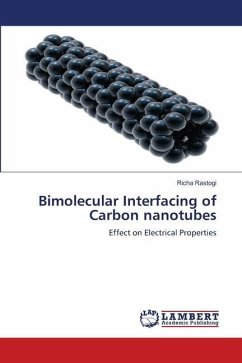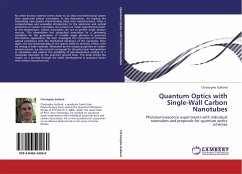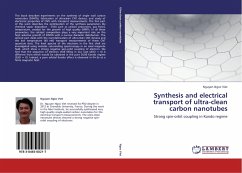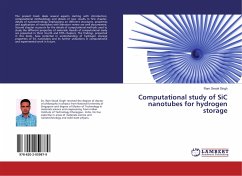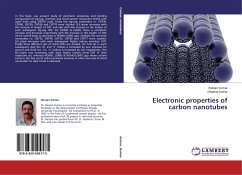
Electronic properties of carbon nanotubes
Versandkostenfrei!
Versandfertig in 6-10 Tagen
27,99 €
inkl. MwSt.

PAYBACK Punkte
14 °P sammeln!
In this book, we present study of electronic properties and binding energy/atom of zig-zag, armchair and chiral carbon nanotubes (CNTs) with open ends using SIESTA code. Firstly five zig-zag nanotubes i.e. CNT30, CNT40, CNT50, CNT60 and CNT70 were studied. B.E./atom increases with the increase in length of CNT and also with the increase in the indices of each subsequent zig-zag CNT. For HOMO & LUMO, there is consistent increase and decrease respectively with the increase in the length of CNT which overall leads to decrease in HOMO-LUMO gap. Similarly five armchair nanotubes i.e. CNT33, CNT44, ...
In this book, we present study of electronic properties and binding energy/atom of zig-zag, armchair and chiral carbon nanotubes (CNTs) with open ends using SIESTA code. Firstly five zig-zag nanotubes i.e. CNT30, CNT40, CNT50, CNT60 and CNT70 were studied. B.E./atom increases with the increase in length of CNT and also with the increase in the indices of each subsequent zig-zag CNT. For HOMO & LUMO, there is consistent increase and decrease respectively with the increase in the length of CNT which overall leads to decrease in HOMO-LUMO gap. Similarly five armchair nanotubes i.e. CNT33, CNT44, CNT55, CNT66 and CNT77 were studied. B.E./atom increases with each subsequent higher indices armchair CNT. Finally three different sets of chiral CNTs are studied. For first set in each subsequent step the m and n indices is increased by one whereas for second and third set, m , n indices is increased by one respectively. The B.E./atom was increasing with each higher indices chiral CNT in their respective set, whereas HOMO, LUMO & HOMO-LUMO gap shows certain trend in the first set of chiral nanotube whereas in other two sets of chiral nanotubes no clear trend is observed.



